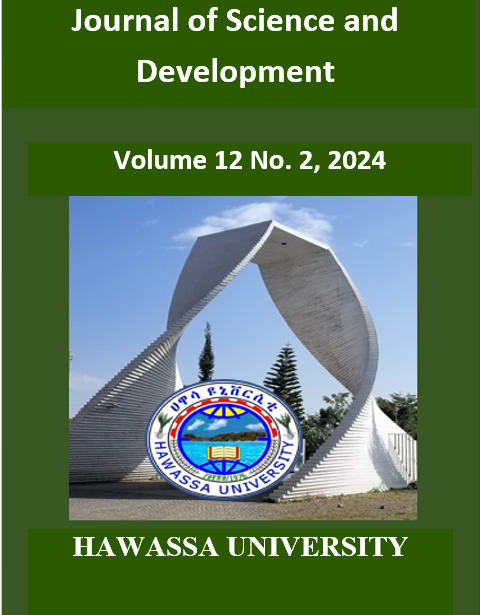In Vivo Induced Sucker Regeneration Efficiency of Enset (Ensete ventricosum (Welw.) Cheesman) Landraces Corm Splits Grown under Lath House in Hawassa, Ethiopia
Keywords:
enset landraces, in vivo macro propagation, regeneration, rhizome split, sucker numberAbstract
Enset is a vegetatively propagated, drought-tolerant food and income security crop in Ethiopia. However, studies on optimized, economically viable and quick enset propagation methods are limited. This experiment was aimed to explore the in vivo-induced sucker regeneration efficiency of enset landraces corm splits grown under a lath house. Six landraces, namely ‘Ado,’ ‘Astara,’ ‘Ganticha,’ ‘Keshicha,’ ‘Kulle,’ and ‘Midasho,’ were selected. The parent corms were uprooted, and apical buds were removed. The corms were then split into eighths and sun-exposed for 48 hours to heal the cut wounds. The experiment was arranged in a completely randomized design (CRD) with three replications over two years, and the corms were buried in a soil media mixture until sucker harvest. Biometric parameters such as days to 50% emergence, regeneration percentage, and number of suckers per corm, green leaf number, leaf length, leaf width, pseudostem height, pseudostem circumference, and sucker height were recorded. A combined analysis of variance (ANOVA) was conducted using the SAS statistical program, Version 9.4, after normality and homogeneity of variance tests were conducted. All parameters evaluated were significantly (p < 0.001) affected by the variation in enset landraces. The landraces ‘Midasho’ and ‘Ado’ had the earliest (49.9 days) and longest (82.46 days) days to 50% emergence, respectively. The highest number of suckers (45) per corm split and per whole corm (360) were obtained for the landrace ‘Midasho,’ while the lowest number of suckers were 9.87 and 78.96 per corm split and whole corm, respectively, for the landrace ‘Ado.’ The use of an eighth parent corm split in vivo induces sucker regeneration under the lath house technique, providing large quantities of planting material with genotype purity efficiently in a shorter time compared to traditional propagation methods, which typically produce 40 to 200 suckers per mother corm.
Downloads
Published
Issue
Section
License
Copyright (c) 2024 Sisay Beyene

This work is licensed under a Creative Commons Attribution 4.0 International License.
The author(s) of the individual articles remain the copy right of their articles.

